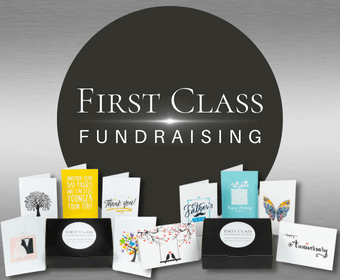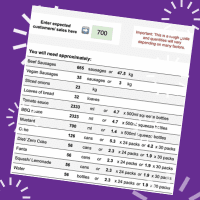
Article
Fete Food and Drink Stalls
7 October 2024
Food stalls can make or break your event. Not enough, and the queues are too long and customers get grumpy, even worse - you might run out of food! Too many stalls, and you might see your profits sizzle and burn like an overcooked sausage. Striking the perfect balance between having sufficient options and minimising waste can be challenging.
It is up to the Organising Committee to determine how many ‘serves’ of food each stall will need to provide. Some stalls may also be able to provide additional serves at very short notice - such as sausage sizzle, bacon and egg burgers, grazing platters and crepes. Here are some considerations when planning food.
Food safety
Hosting a fete is a fun and rewarding way to bring the community together, but it also comes with essential responsibilities. One of the most important aspects is ensuring food safety at food stalls. This article will discuss the necessary precautions and regulations you must follow to maintain food safety at your event.
Legislation and Permits
Food stalls are governed by strict food handling legislation, which varies by state and council area. Be aware that specific permits may be required to operate food stalls at your fete. Research local regulations and obtain the necessary permits to ensure compliance and avoid potential fines or closures.
Electrical Equipment Safety
All electrical equipment, such as slow cookers, hot plates, sound systems, and fairy lights, must be tested and tagged by a qualified electrician. This ensures that all equipment is safe to use and reduces the risk of electrical hazards during the event.
Proper Food Stall Setup
Certain rules govern the setup of food stalls. For example, stalls may be required to be set up on surfaces other than grass or sand, and specific rules may dictate the number of walls a marquee should have. Adhering to these regulations helps maintain cleanliness and safety in food preparation and serving areas.
Health Inspector Visits
Be prepared for a visit by a local health inspector who may ask questions about food storage, serving temperature, and other food safety practices. Ensure that all food handlers have the necessary training and knowledge to meet these requirements.
Proper Food Labelling
It is crucial to label all food items properly, including listing ingredients and potential allergens. This practice helps prevent allergic reactions and ensures that customers can make informed choices about their food consumption.
Food Storage and Temperature Control
Store perishable items at the correct temperature to minimise the risk of foodborne illnesses. Use thermometers to monitor and maintain appropriate temperatures for both hot and cold food items. Additionally, store raw and cooked foods separately to prevent cross-contamination.
Personal Hygiene and Protective Equipment
Ensure that all food handlers practise good personal hygiene by regularly washing their hands, wearing gloves, and using hairnets when necessary. This practice helps reduce the risk of spreading germs and contaminating food.
Cleaning and Sanitising
Maintain a clean and sanitary environment by regularly cleaning and sanitising all surfaces, utensils, and equipment. This practice helps prevent the spread of bacteria and ensures a safe environment for food preparation and consumption.
Food safety handling at a fete is a critical aspect of organising a successful and enjoyable event. By adhering to local regulations, maintaining proper food storage and temperature control, practising good personal hygiene, and ensuring a clean and sanitary environment, you can provide a safe and memorable experience for all attendees.
DIY Food stall ideas
- Sausage sizzle
- Burgers (or egg and bacon burgers if it’s a morning event)
- Pizza
- Gozleme
- Nachos
- Grazing platters (cheese, crackers, olives, grapes etc)
- Cake stall
- Curry
- Sushi
- Satay kebabs
- Loaded fries
- Waffles or crepes
- Homemade sausage rolls
- Cinnamon buns
- Spring rolls, curry puffs
- Chinese fried rice
- Paella
- Salad/fruit salads
- Lasagne and pastitsio
- Devonshire tea (scones and tea/coffee)
- High tea
Drink stall ideas:
- Slushies
- Homemade lemonade
- Cans of soft drinks, juice boxes
- Coffee
- Flavoured hot chocolate
- Bar (beer and wine)
- Sangria
- Freshly squeezed juice
- Lassi (Indian yoghurt milkshake)
Estimating Quantities
Know Your Audience
Estimate food quantities by understanding your expected attendance. Consider factors such as age, dietary preferences, and whether attendees are likely to bring their own food. Cater to different dietary restrictions or allergies, and remember that children generally eat smaller portions than adults.
Portion Control and Variety
Research suggested serving sizes for various dishes as a guide for your calculations. Offer a range of food options to ensure there's something for everyone, but adjust your calculations accordingly, as multiple choices can complicate estimating quantities. For example, if you have three main dishes, reduce the portion size for each dish by a third.
Snack and Dessert Considerations
Include snacks and desserts in your calculations, estimating around 150-200 grams per person for snacks and 100-150 grams per person for desserts. If offering multiple dessert options, divide the total dessert weight by the number of choices.
Beverage Planning
Calculate approximately 300-500 millilitres of non-alcoholic beverages per person and 100-200 millilitres of alcoholic beverages per adult. Provide options for different preferences, such as soft drinks, water, and juice.
Contingency Plan and Monitoring
Prepare for unexpected situations by adding a 10-15% buffer to your food calculations. Monitor food consumption throughout the fete to identify patterns and make adjustments as needed, redistributing food from less popular options to ensure nothing runs out.
Food Stall Management
Determine how many serves each food stall will need to provide, considering that some stalls might be able to provide additional serves at short notice. Be aware of strict food handling legislation and permit requirements, which may differ by state or council area. Ensure all electrical equipment is tested and tagged by an electrician.
Balancing Profitability and Labour Intensity
Food stalls can be profitable but labour-intensive. Consider carefully which stalls will be most profitable and manageable given your local community and volunteer base. External food vans may be a viable alternative if you lack the resources for managing multiple food stalls.
To-do list for food stall coordinators
As a food stall coordinator at a fete, managing various tasks efficiently is crucial. Below is a to-do list that can be delegated among your team of helpers:
- Determine whether you will ask volunteers to donate food items on the day (e.g., a cake stall), or if it's more suitable to have them donate ingredients or money and cook fresh food at the event (e.g., paella and sausage sizzle).
- Coordinate with the fete convener to ensure all necessary approvals have been filed with the local council/authorities and any required licences have been obtained.
- Send a letter to potential volunteers detailing the assistance needed, including:
- Donations of cash or ingredients
- Donations of food/drinks
- Assistance with stall setup and teardown
- Cooks during the event
- Ingredient preparation helpers
- Cash handlers
- Servers
- Identify any necessary equipment to hire or borrow (e.g., slow cookers, pizza ovens, bain maries) and liaise with the hiring officer or site convenor.
- Determine the supplies needed for serving food (e.g., plates, bowls, cutlery, napkins, chopsticks) and coordinate with the purchasing officer.
- Maintain a record of quotes and expenses for the handover book.
Provide expense claim forms to relevant individuals and remind them to keep receipts. - Organise a volunteer roster and distribute it via email to all volunteers.
Set pricing for food items, request a cash float from the treasurer, and organise a lockable money tin. - Plan decorations and the layout of the food stall.
- After the fete, prepare handover notes and express gratitude to your volunteers.
Catering a Sausage Sizzle
Catering a sausage sizzle can be challenging, particularly when estimating the number of attendees and considering the variety of food stalls available.
Keep in mind that the more donations or better deals you can secure from suppliers, the more funds will be raised for your organisation.
Consider the following when ordering or purchasing supplies
- Time of day: Daytime events attract more families with young children, while evening events prompt attendees to seek more substantial meals.
- Event duration: Determine if the event spans a few hours or all day, and if it covers lunch and dinner.
- School or club size: Smaller institutions should opt for lower estimates.
- Availability of other food stalls: Consider the number of alternative food options.
- Weather: Sales can decrease on rainy or overcast days.
- Time of year: Sausages are popular year-round but may be particularly appealing on warm summer evenings.
- Emergency supply runs: Have someone on standby for last-minute shopping trips.
- Onion preparation: Request pre-sliced onions from your supplier, even if it costs a bit extra.
TIP: Connect with local Lions or Rotary groups, as they can assist with fundraisers like sausage sizzles. They may even provide sausages, bread, and condiments while running the sizzle at your event, boosting your profits.
Here is a starting point for planning your own sausage sizzle:
- A supermarket brand sausage weighs 65-75g, so 5kg will yield 65 to 75 sausages.
- A loaf of bread provides 16-20 slices; allocate 4-5 loaves per 5kg of sausages.
In Western Australia, hot dog buns are more common; plan for six or seven bags of 12 buns for 5kg of sausages. - The onion-to-sausage ratio is roughly 1:3; for 5kg of raw sausages, you need at least 1.5kg of onions.
- Plan for tomato sauce, BBQ sauce, and mustard in a 2:1:1 ratio; purchase large 2L bottles and transfer to smaller squeeze bottles as needed.
Note: We have created an Interactive Sausage Sizzle Quantity Calculator that can help you estimate what you'll need!
By considering these factors and being prepared, you can successfully cater a sausage sizzle at your event.
Articles in this series
Register your details to get a copy of our 2025 Fundraising Planner sent to your door for FREE!
Explore suppliers

Fundraising Specialist
Our events consist of Yobbo Lotto, Music Bingo, Horsing Around, Trivia Nights, Sports/Comedy nights and Silent Auctions and we look forward to helping you find the right fit for your fundraising needs.
View profile
First Class Fundraising
Fundraise with quality Australian-made and owned greeting cards. No outlay so no risk.
View profile
Popular
Bite Size FUNraising
Bite Size FUNraising helps schools, child care, sporting clubs and various other organisations raise money for a meaningful cause.
View profile








